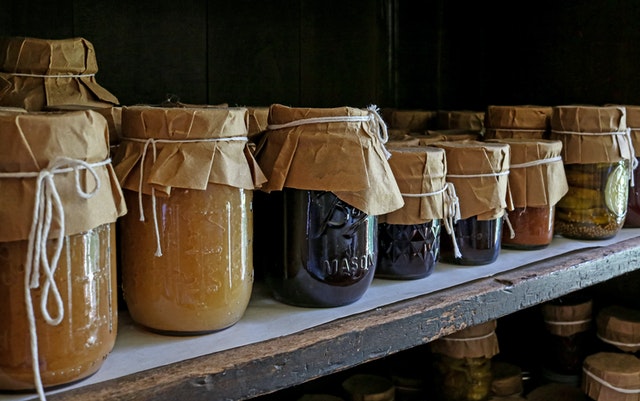Laurie writes from her Green-Built, Energy Star-certified “concrete bunker” in northeast Wisconsin, where she and her family work to stock their canning pantry and root cellar from their extensive garden and local suppliers whenever possible.
Earth sheltered attached greenhouse and rain barrels
The home features passive and active solar, a masonry stove, ICF (Insulate Concrete Form) construction, wheatboard cabinetry, handicap accessibility, two 50-gallon rain barrels, a small attached greenhouse, and many other energy and water saving features.
View of home from south. Note solar water heating panels and large south facing windows with overhang.
Laurie and her husband rent out a portion of their acreage to a nearly organic farmer. The balance is a combination of wild areas (used for foraging), annual and perennial gardens, orchards, and a small but growing assortment of permaculture crops. They are in the process of constructing a larger greenhouse to expand their food production options.
Working in the garden
Raised on a small dairy farm in NW Wisconsin, Laurie has many years of experience with producing her own food. This comes together with her college training in math and engineering, plus years of personal studies in health, herbalism, and preparedness to give readers a “hands-on homesteading” experience. This family lives what they write about, and they can teach you to be more self-reliant, too. Get a FREE COPY of the e-book, “Common-Sense Homesteading 101: 7 Steps to Become More Self-Reliant Now” when you subscribe to the Common Sense Homesteadingnewsletter, click the book to subscribe:

